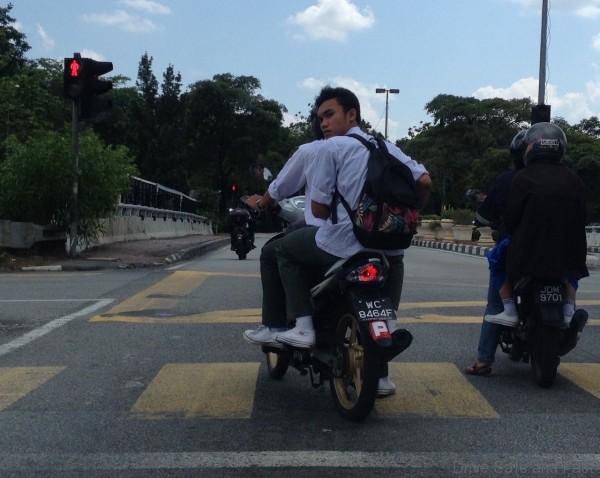Pakistan’s E-Challan System Sees Reduced Traffic Violations
We can learn a thing or two from them and see what have they been doing that works
Motorists running red lights have become a common sight in Malaysia. Whether in big cities or small towns, these traffic offenders, especially motorcyclists in the delivery services, seem to have no regard for their own safety or maybe they are just simply unaware of the consequences of their actions. Whatever it is, something has to be done to put a stop to it once and for all.

For many years, the local traffic police has been trying to crack down on these red light beaters but the numbers remain too high. According to federal police traffic investigations and enforcement department director DCP Datuk Azisman Alias, 2019 saw a total of 69,267 summonses issued nationwide against motorists for running a red light. Between January and November 2020, 52,170 summonses for the same offence were given out.

Higher fines and continuous road safety campaigns sound impressive on paper but without proper enforcement, these efforts to reduce the number of motorists running red lights and committing other traffic offences, for that matter, may go in vain. Perhaps it is time we began to look at what other countries are doing to tackle this problem.
This may be the most unlikely of sources but the capital city of Pakistan, Islamabad employs a system that Malaysia can admire and emulate – the e-challan. Generally used in India and Pakistan, ‘challan’ is a term that means ticket, fine, or penalty, depending on the context. The system is linked to surveillance cameras placed at various locations around the city to catch traffic violators.

It may sound a bit like George Orwell’s Big Brother but according to a report, the system has seen decline in traffic offenses since its inception in April 2021, though the number of e-tickets issued is still rather large at more than 20,000. It is, nevertheless, a positive takeaway for the local enforcement agencies.
Launched under Islamabad’s Safe City project, which is an initiative to increase safety by controlling crime and monitoring traffic, the e-challan system has an effective process in which the summonses will be sent to the addresses of vehicle owners registered with the Excise and Taxation Office. Offenders are given 10 days to pay the fine.

Failure to do so will result in the copy of the ticket being placed in the master file at the Excise and Taxation Office. In addition to legal action taken against the owner of the vehicle, the vehicle itself could not be sold or transferred to other parties until the fine is settled.
Malaysia does have a similar system in the form of AES (Automated Enforcement System). However, as of 2018, the number of cameras deployed under this system is incredibly low – 29 for speed limits placed along major highways throughout the Peninsular and only 16 for traffic lights. Similarly, tickets will be sent to the addresses of the vehicle owners.

In short, we already have the right system to identify and punish these offenders but why do we still see motorists beating the red light on a regular basis? One may argue that more traffic light cameras are needed, which is true, but it is fair to say that it is the enforcement that needs beefing up instead. We can start by not giving out discounts for traffic summons. Then maybe we can move on to dishing out harsher punishments like impounding vehicles with outstanding summons.